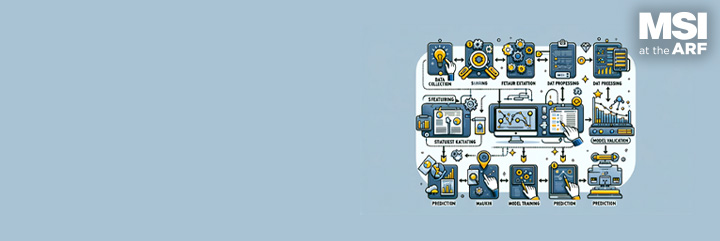Explore the latest findings from the ARF Attention Measurement Validation Initiative. The phase two report is a comprehensive examination of various attention measurement methods used in creative testing. It concludes with reflections on the challenges of attention measurement, as well as some suggestions for advertisers on how to choose and evaluate attention measurement providers.
Member Only Access
The ARF’s annual AUDIENCExSCIENCE conference highlighted the most critical audience measurement issues. Through keynotes, panels, debates and rigorously peer-reviewed research presentations, attendees learned about a wide array of new and evergreen industry topics, endemic to our industry changes. World-class thinkers joined us in NYC to share their perspectives on the future of advertising research and measurement, and how tomorrow’s technologies and data trends will impact advertising and media.
Member Only Access
Audience measurement is changing at an unprecedented rate. Concurrently, identifiers such as cookies are fading, and traditional models and incumbent suppliers are being questioned. In reaction to all these happenings, new measurement initiatives and a new Joint Industry Committee (JIC) have risen to establish a path toward a new video measurement framework. In 2023, the Online-Offline Metrics Working Group, within the ARF Cross-Platform Measurement Council, conducted anonymous, in-depth-interviews (IDIs) with eight key decision-makers from major agency holding companies. The IDIs focused on three major issues involving the metric situation confronting the advertising industry. This report summarizes the learnings from those interviews.
Member Only Access
On February 6, Analytics Council Organizational Working Group members Shelley Yang (Director, Insights Activation at Ipsos Creative Excellence) and John Baro (Manager, Market Research & Insights at Spectrum Reach) shared a summary of their learnings from a set of 21 in-depth interviews (IDIs) conducted with ARF members to understand what insights and analytics departments should do to future-proof themselves. Then, a panel of senior researchers -- Helen Katz (EVP, Research at Publicis Media), Michelle Gibb (Vice President, Global Insights & Analytics at Mondelez International), and Jed Meyer (SVP, Media Solutions Leader of Kantar) -- and an industry observer, Simon Chadwick (Managing Partner at Cambiar LLC) joined Shelley to share their perspectives on the topic. Their conversation was moderated by Steven Millman, Global Head of Research & Data Science at Dynata. The presentations and panel touched on AI, outsourcing, skill sets, and mindsets.
Member Only Access








